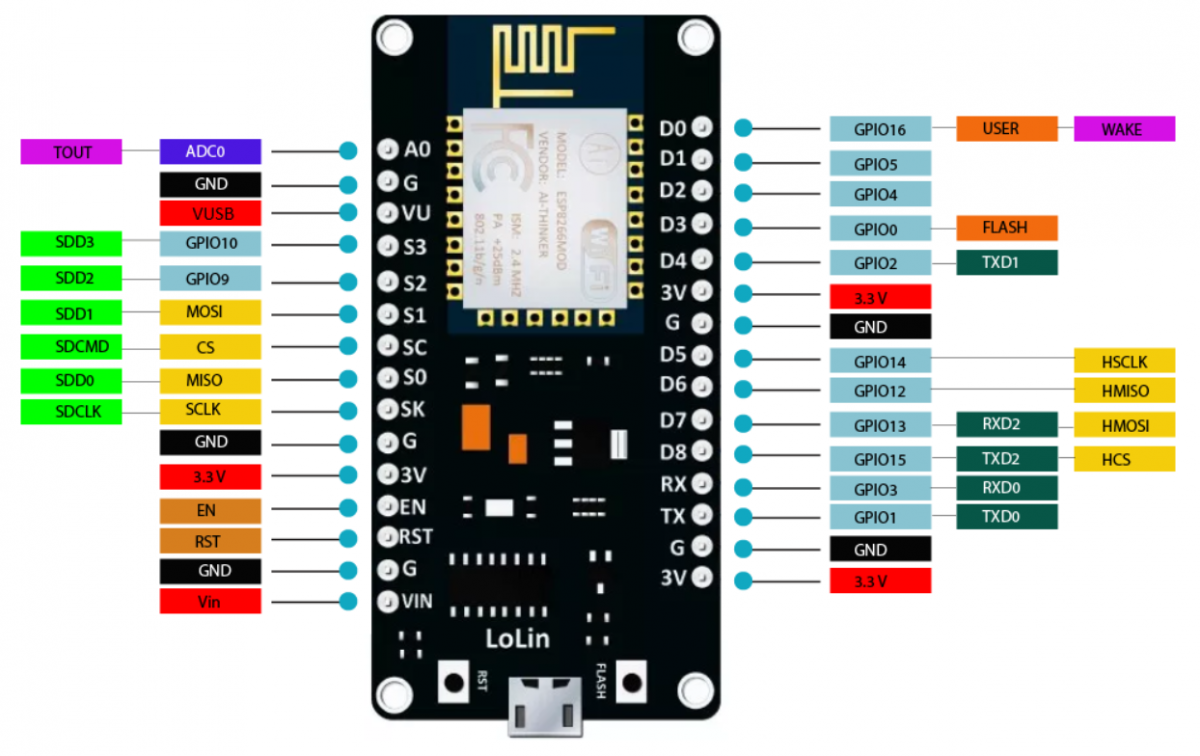
"Nodemcu Esp32 Pinout" Tutorials
The first one is to find and download them on the internet ( NodeMCU drivers and CP2102 ). The second is to use the device manager. The microcontrollers connected to the computer are found under the tab "Ports (COM and LPT)". Double-click on the device and the properties window will appear. Under the "Driver" tab, you will find the.
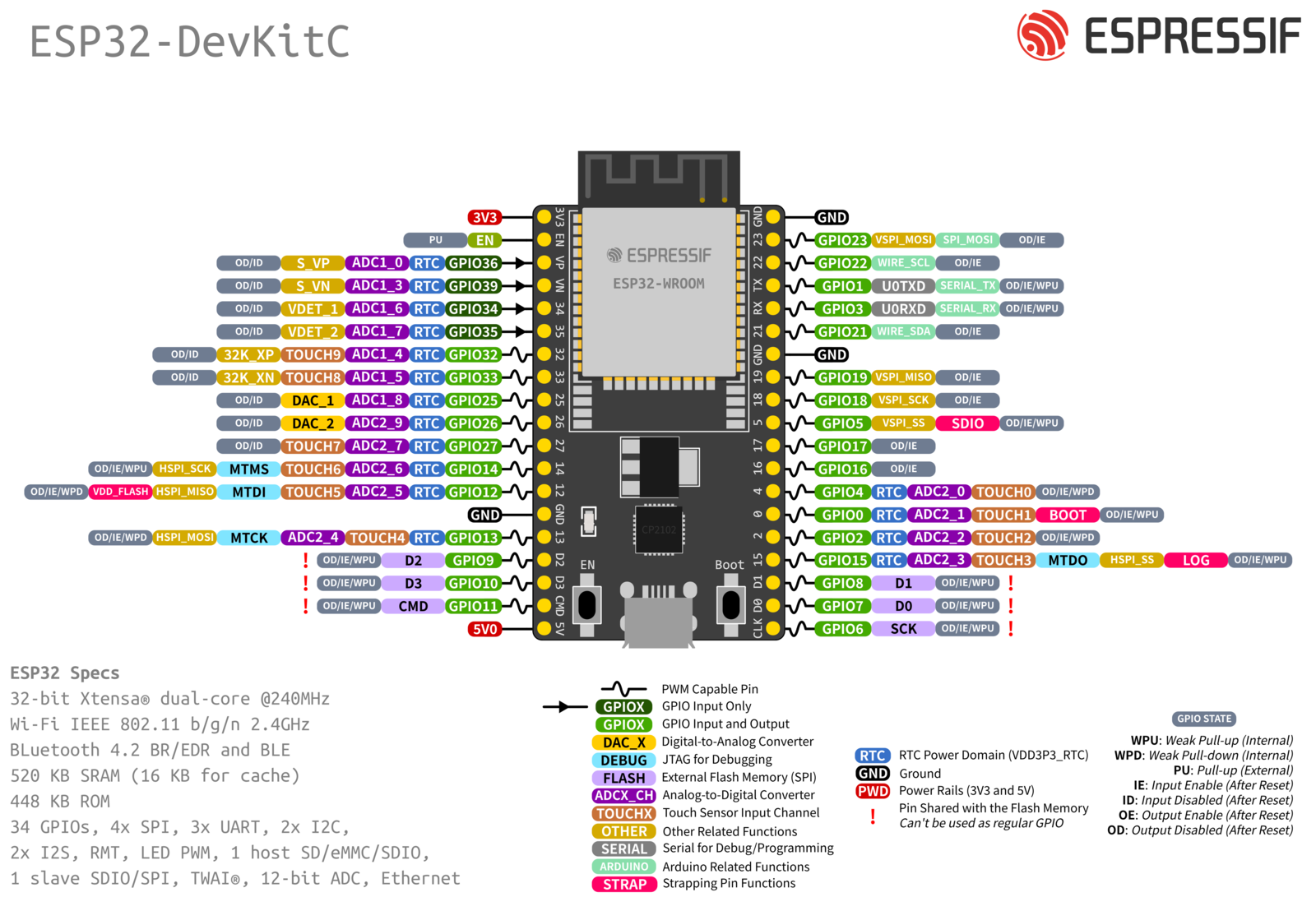
"Esp32 Wroom 32e Pinout" Tutorials
The ESP32 is a series of low-cost and low-power System on a Chip (SoC) microcontrollers developed by Espressif that include Wi-Fi and Bluetooth wireless capabilities and dual-core processor. If you're familiar with the ESP8266, the ESP32 is its successor, loaded with lots of new features. Updated 29 September 2023 New to the ESP32?
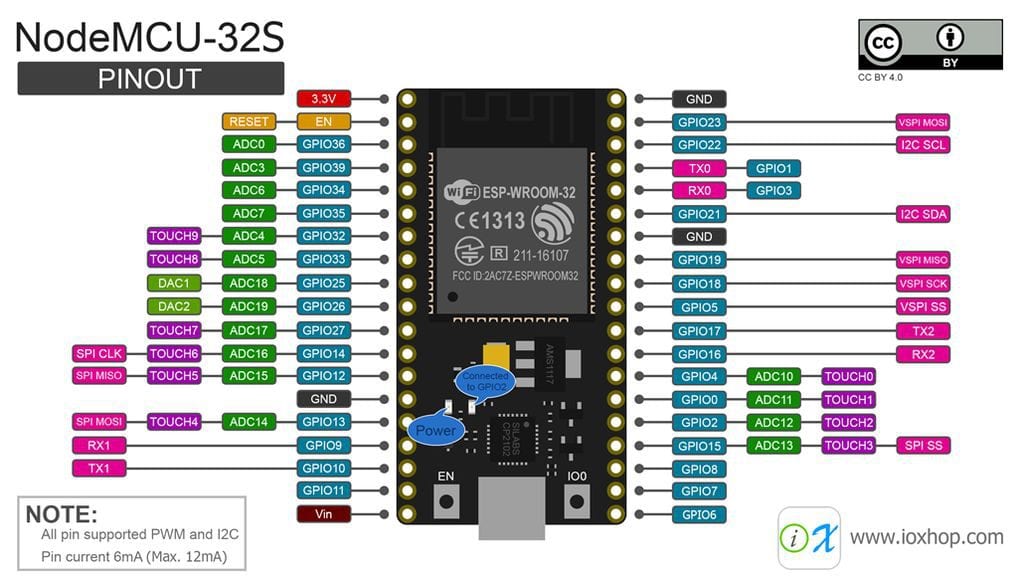
ESP32 tutorial What do you have to know about the ESP32 microcontroller?
The ESP32 based nodeMCU has 8 ADC channels, on pins 32 through 39, but only 6 are actually usable since pins 37 and 38 are not exposed from the chip to a header pin. By default the ESP32 has a 12 bit resolution meaning the analogRead() function will return a value from 0-4096.

NodeMCU ESP32 — ESPHome
The NodeMCU ESP32 module is a compact prototyping board and is simple to program via the Arduino IDE. It has a 2.4 GHz dual mode WiFi and a BT wireless connection. Moreover, the microcontroller has integrated: a 512 kB SRAM and 4 MB memory, 2x DAC, 15x ADC, 1x SPI, 1x I²C, 2x UART. PWM is activated at all digital pins.

Esp32 pin description reading ESP32 Pinout Reference... Download Scientific Diagram
ESP32 Pin Layout (QFN 5*5, Top View) EspressifSystems 13 SubmitDocumentationFeedback ESP32SeriesDatasheetv4.4. 2 Pins 2.2 Overview Overview Name No. ype Function Analog
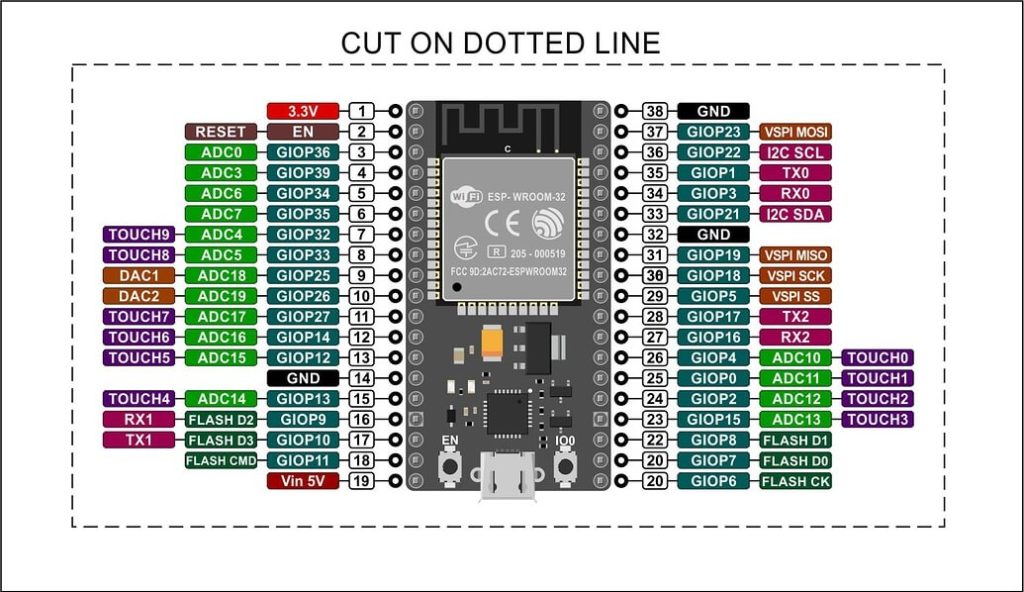
NodeMCU ESP32S Pin Configuration CyberBlogSpot
The DevKit is a development board by ESP32 manufacturer Espressif to demonstrate ESP32 usage and to support prototyping. The NodeMcu is a board by NodeMcu intended for the NodeMcu Lua language firmware. There is no standard pinout. The labels on the DevKit are io pin numbers of the MCU.

Nodemcu ESP32 Pin Giriş ve Çıkışları Etkileşimli Öğrenme
Understanding NodeMCU Pinout Numerous pins on the NodeMCU development board have diverse purposes. Power pins, analog pins, digital pins, UART pins, I2C pins, SPI pins, and other pins can be used to categorize these pins. Let's take a closer look at each pin category. Power Pins
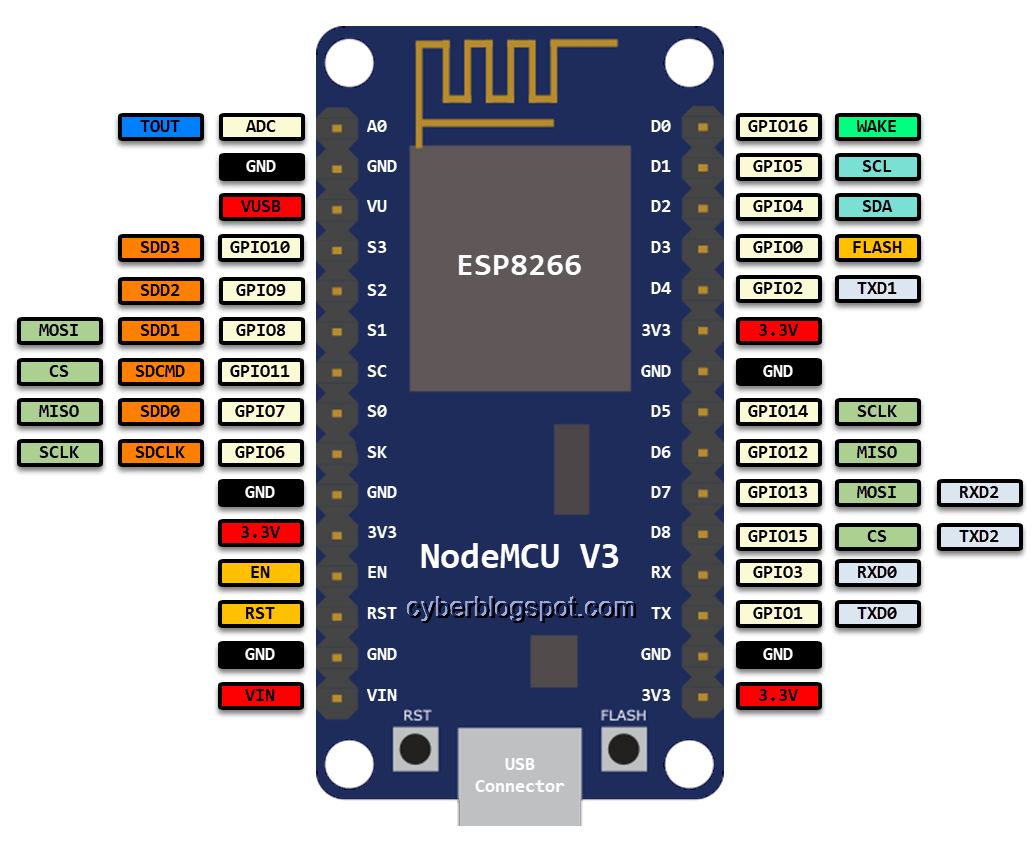
Esp8266 nodemcu datasheet
This is a simple guide about SPI communication protocol with the ESP32 using Arduino IDE. We'll take a look at the ESP32 SPI pins, how to connect SPI devices, define custom SPI pins, how to use multiple SPI devices, and much more. Table of Contents: Introducing ESP32 SPI Communication Protocol ESP32 SPI Peripherals ESP32 SPI Pins

"Nodemcu Esp32 Pinout" Tutorials
Introduction to ESP32 Development board ESP32 Dev board PINOUT: Power Pins: ADC (Analog to digital) Channels: DAC (Digital to Analog) Channels: UART (Universal Asynchronous Receiver-Transmitter) Pins: SPI Pins: PWM Pins: EN or Enable Pin: Where to Buy ESP32 Boards? Datasheet of ESP32 Wroom 32: Schematic of ESP32 Dev Board:

"Nodemcu Esp32 Pinout" Tutorials
ESP32 NODEMCU has been added to your Personal Library. Download schematic symbols, PCB footprints, 3D Models, pinout & datasheet for the ESP32 NODEMCU by Espressif Systems. NodeMCU is an open source loT platform. ESP32 is a series of low cost, low power system-on-chip (SoC) microcontrollers with integrated Wi-Fi & dual-mode Bluetooth..

"Nodemcu Esp32 Pinout" Tutorials
10 Capacitive sensing GPIOs The ADC (analog to digital converter) and DAC (digital to analog converter) features are assigned to specific static pins. However, you can decide which pins are UART, I2C, SPI, PWM, etc - you just need to assign them in the code. This is possible due to the ESP32 chip's multiplexing feature.
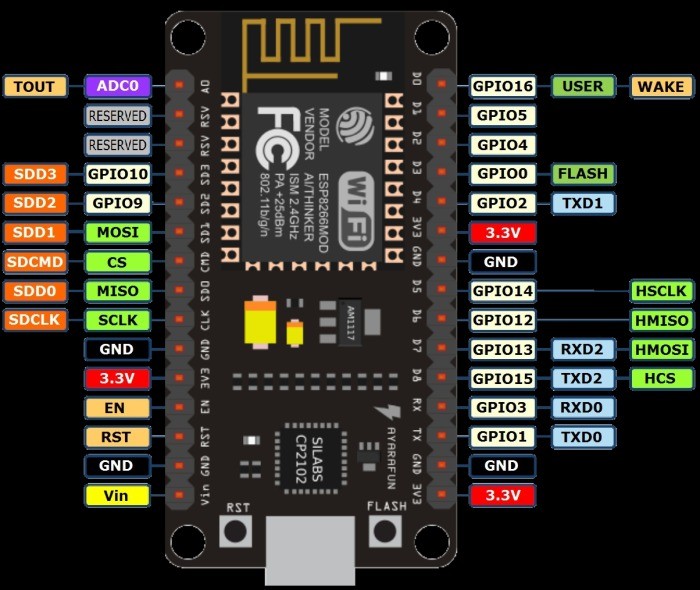
INTERFACING NODEMCU ESP 8266 with LUA Programming Language RRJ
The NodeMCU ESP32 board (in some cases also known as ESP32-DevkitC) is fully supported by ESPHome. Simply select ESP32 when the ESPHome wizard asks you for your platform and nodemcu-32s as the board type. # Example configuration entry esphome: name: livingroom esp32: board: nodemcu-32s
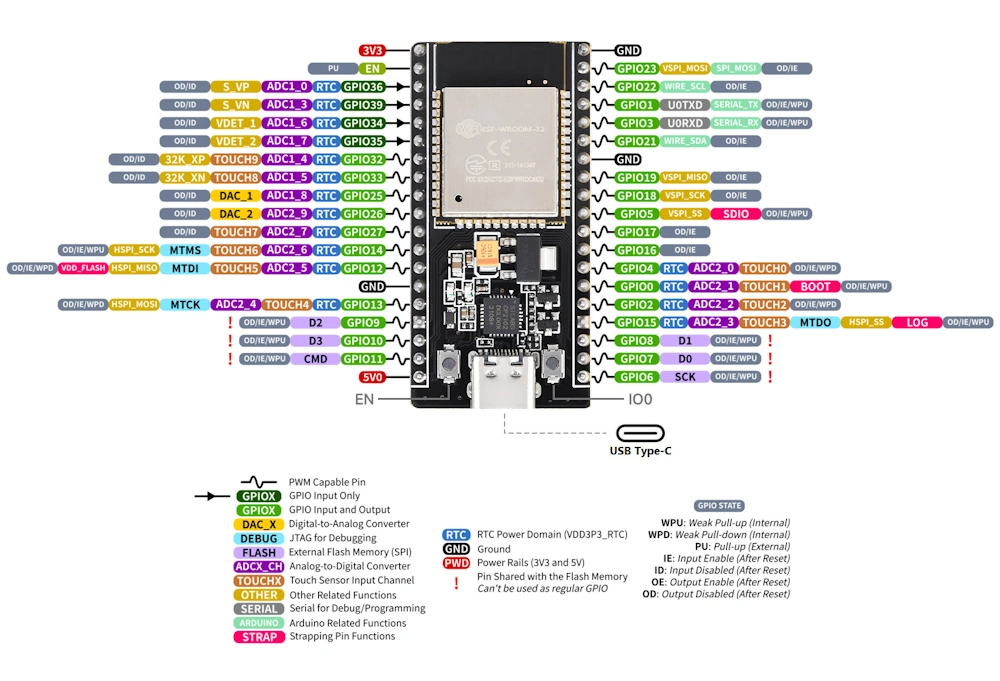
Microcontrollers The NodeMCU ESP32 by Espressif Systems
The ESP32 supports I2C communication through its two I2C bus interfaces that can serve as I2C master or slave, depending on the user's configuration. Accordingly to the ESP32 datasheet, the I2C interfaces of the ESP32 supports: Standard mode (100 Kbit/s) Fast mode (400 Kbit/s) Up to 5 MHz, yet constrained by SDA pull-up strength

ESP32 Pinout Reference
This is the NodeMCU development board based on ESP32, features WiFi+Bluetooth connectivity, onboard CP2102 and keys. What's more, all the I/O pins of ESP32 module are accessible via the extension headers.
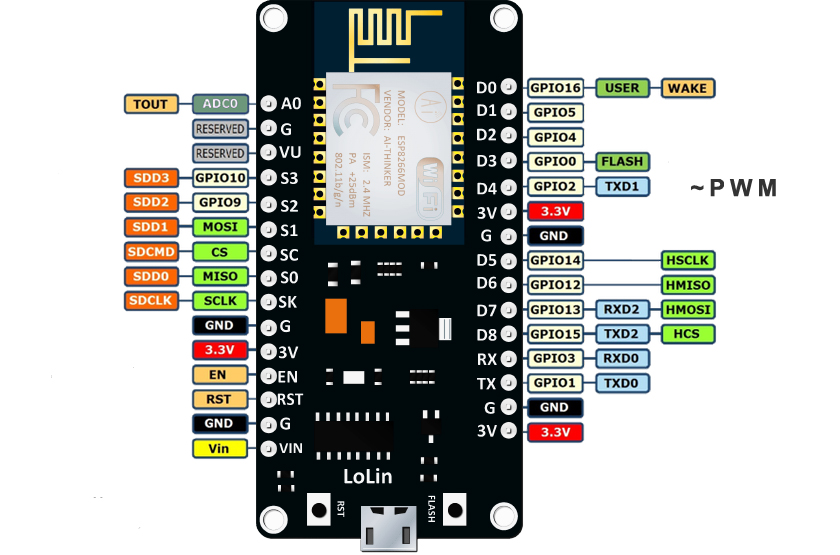
NodeMCU Pinout Reference Microcontroller Tutorials
Carlo Supina 02 Dec 2020 Programming an ESP32 NodeMCU with MicroPython: Basic GPIO Input and Output Watch on Prerequisite Guides Getting Started with ESP32 and MicroPython Supplemental Guides How to Find Your Device's Port You Will Need ESP32 NodeMCU (38 pin) MicroUSB Cable Computer running Windows, Linux, or MacOSX Breadboard LED
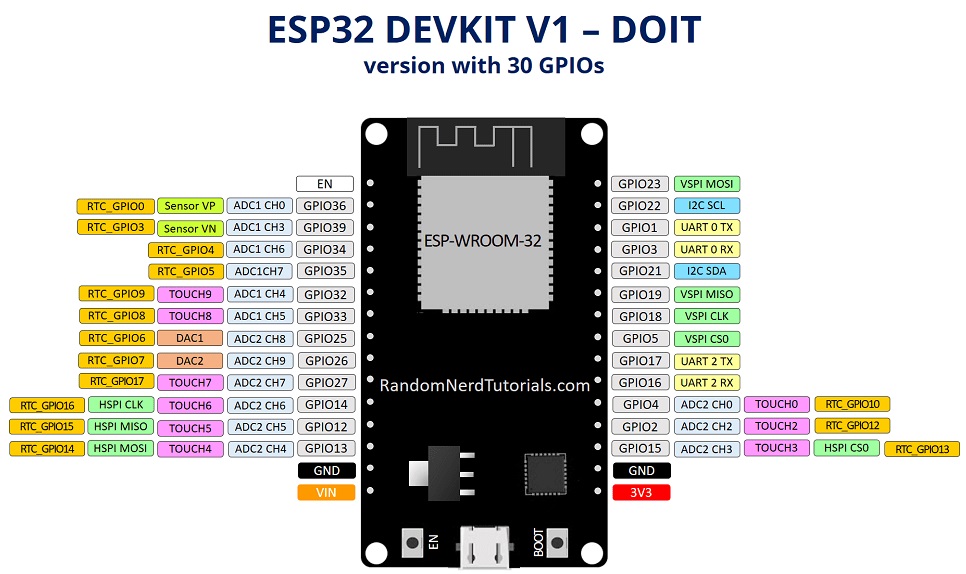
NODEMCU ESP32
Step 1: NodeMCU ESP-WROOM-32 Here we have the PINOUT of the WROOM-32 that serves as a good reference for when you program. It is important to pay attention to General Purpose Input / Output (GPIOs), that is, programmable data input and output ports, which can still be an AD converter or a Touch pin, such as GPIO4, for example.